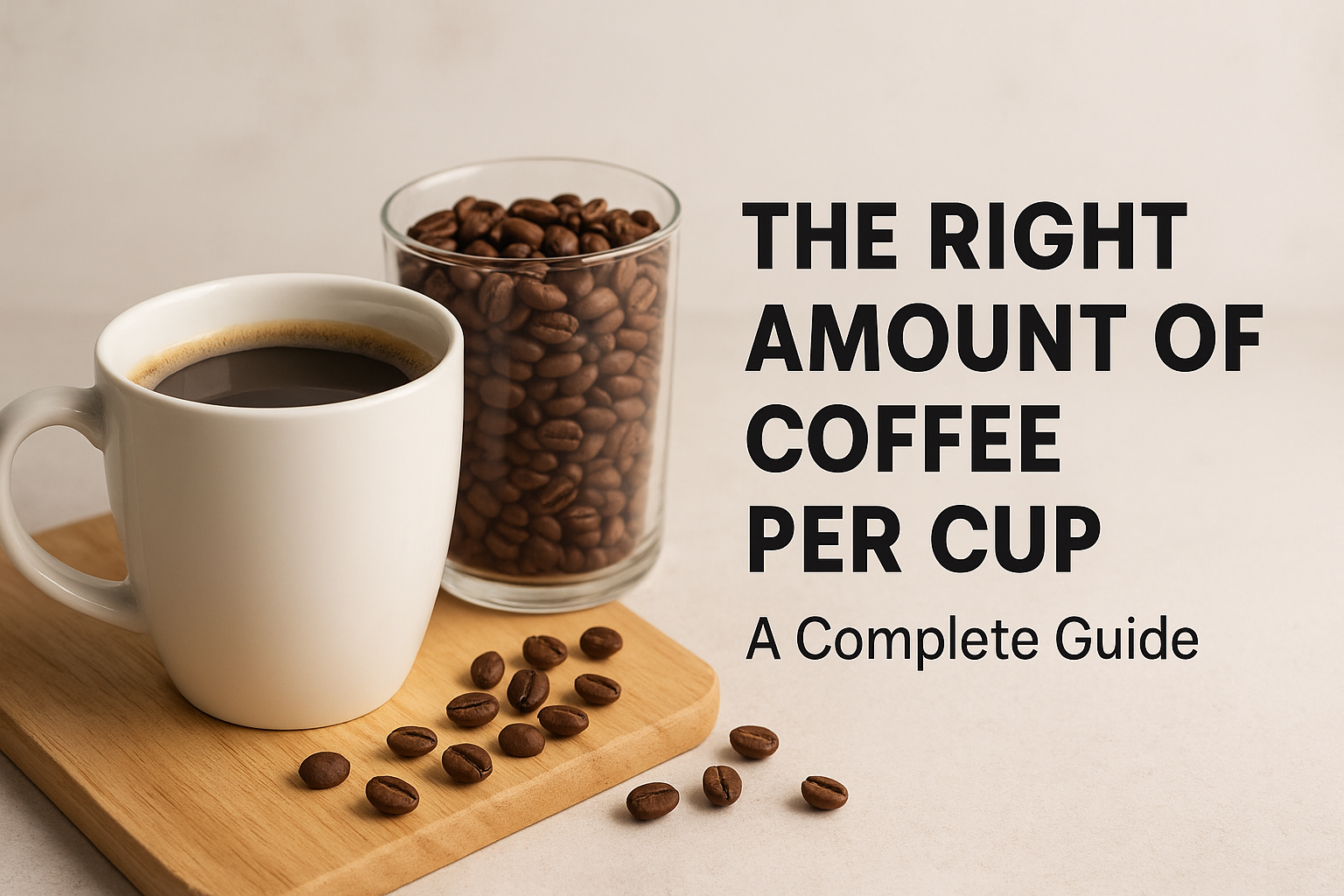One of the most common questions coffee lovers have is, “How much coffee should I use per cup?” While the answer may seem simple, it actually depends on factors such as brewing method, coffee strength preference, and the type of beans used.
The right coffee-to-water ratio can make the difference between a weak, watery drink and a rich, balanced cup.
In this guide, we’ll explore how to measure coffee accurately for different brewing styles, why ratios matter, and how to fine-tune your brew for the perfect taste.
Why Coffee-to-Water Ratio Matters
Coffee brewing is all about extraction—the process of drawing flavors, oils, and compounds from ground coffee into water. If you use too little coffee, the extraction may be weak, producing a bland or sour taste.
Too much coffee can lead to over-extraction, making the brew bitter and overpowering. The right ratio ensures that you achieve a balanced, flavorful cup every time.
The Golden Ratio for Coffee
A widely recommended starting point is the “Golden Ratio” of 1:15 to 1:18—that is, 1 gram of coffee for every 15 to 18 grams of water.
This translates roughly to 1 to 2 tablespoons of ground coffee per 6 ounces of water for most brewing methods.
However, exact measurements will vary depending on your brewing style and personal taste preferences.
Measuring Coffee: Weight vs. Volume
While you can measure coffee by tablespoons, using a kitchen scale to measure by weight is far more accurate.
Coffee bean sizes and densities vary, which means a tablespoon of one coffee might weigh more or less than another.
Measuring by weight ensures consistency in every brew.
Coffee Amounts for Different Brewing Methods
Here’s a general guide for popular brewing methods:
Pour-Over (e.g., Hario V60)
- Ratio: 1:16
- Example: 25g coffee to 400g water
French Press
- Ratio: 1:15
- Example: 30g coffee to 450g water
Espresso
- Ratio: Around 1:2 (coffee to liquid yield)
- Example: 18g coffee for a 36g shot
Drip Coffee Maker
- Ratio: 1:16
- Example: 60g coffee to 1 liter of water
Cold Brew
- Ratio: 1:8 for concentrate, then dilute to taste
- Example: 125g coffee to 1 liter of water (steeped 12–24 hours)
Adjusting for Taste Preferences
- For stronger coffee: Use a 1:15 ratio or slightly less water.
- For lighter coffee: Use a 1:17 or 1:18 ratio.
- Keep other factors consistent (brew time, temperature, grind size) when experimenting with ratios so you can clearly taste the difference.
The Importance of Grind Size
Even with the correct coffee-to-water ratio, grind size can affect taste. For example, a coarse grind in a pour-over will under-extract, while a fine grind in a French press can over-extract and taste bitter.
Matching grind size to your brewing method ensures that your ratio delivers the intended flavor profile.
Water Quality and Temperature
The quality of water plays a major role in how your coffee tastes. Use filtered water when possible, and brew at a temperature of 92–96°C (197–205°F). Water that’s too hot can over-extract coffee, while water that’s too cool can under-extract it.
How to Measure Without a Scale
If you don’t have a scale, you can still measure coffee with household tools. As a general rule:
- 1 level tablespoon ≈ 5–7 grams of coffee
- 2 tablespoons ≈ 10–14 grams
Common Mistakes to Avoid
- Eyeballing measurements: Leads to inconsistent flavor.
- Ignoring freshness: Old beans produce flat-tasting coffee regardless of ratio.
- Using unfiltered water: Can introduce unwanted flavors.
Final Thoughts
Finding the right amount of coffee per cup is part science, part personal preference. Start with the golden ratio, adjust to taste, and keep your grind size, water quality, and brewing method consistent.
Over time, you’ll develop a precise routine that gives you the perfect cup every time. Remember: great coffee is the result of balanced proportions and careful preparation.
